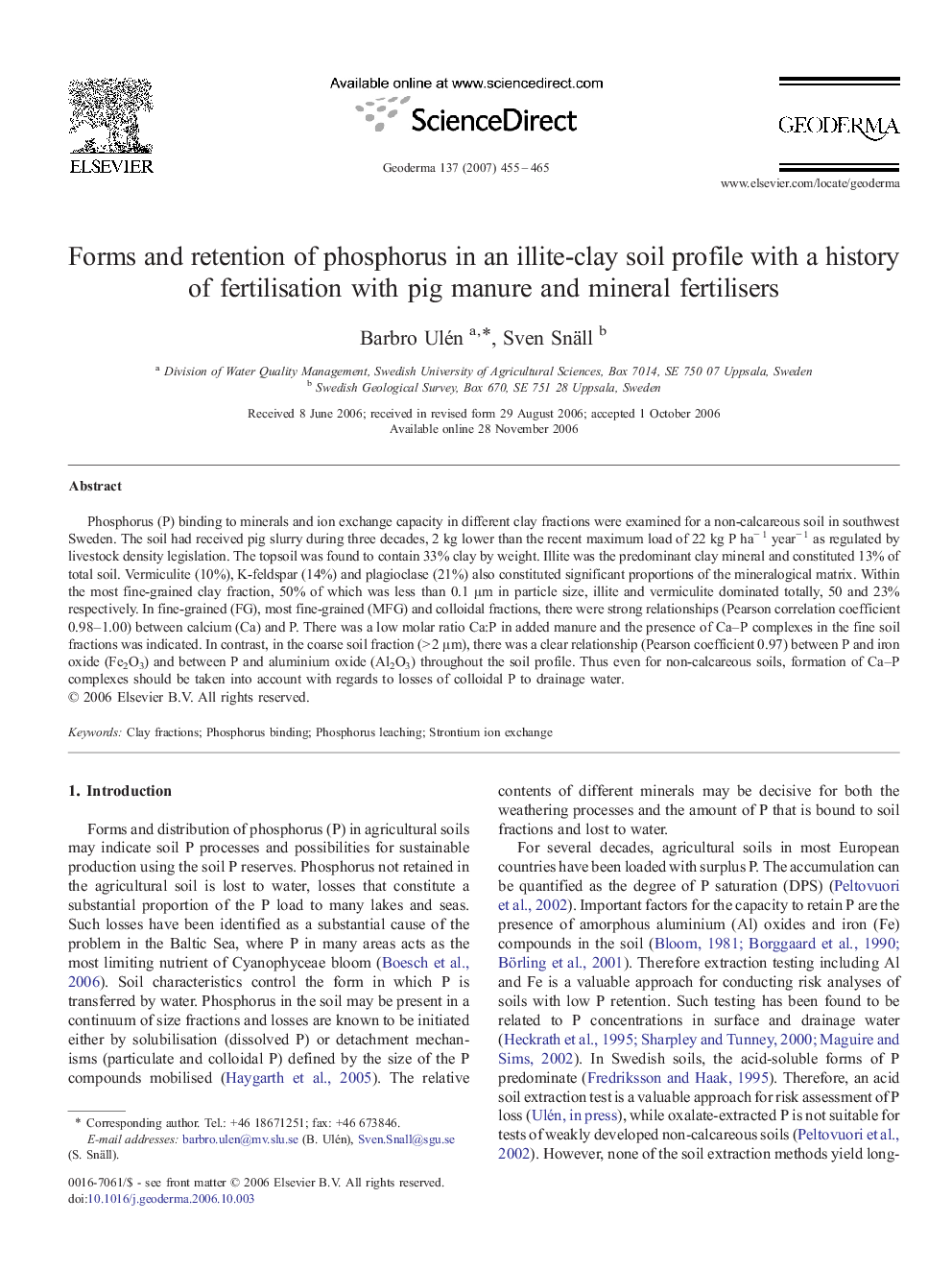| Article ID | Journal | Published Year | Pages | File Type |
|---|---|---|---|---|
| 4575437 | Geoderma | 2007 | 11 Pages |
Phosphorus (P) binding to minerals and ion exchange capacity in different clay fractions were examined for a non-calcareous soil in southwest Sweden. The soil had received pig slurry during three decades, 2 kg lower than the recent maximum load of 22 kg P ha− 1 year− 1 as regulated by livestock density legislation. The topsoil was found to contain 33% clay by weight. Illite was the predominant clay mineral and constituted 13% of total soil. Vermiculite (10%), K-feldspar (14%) and plagioclase (21%) also constituted significant proportions of the mineralogical matrix. Within the most fine-grained clay fraction, 50% of which was less than 0.1 μm in particle size, illite and vermiculite dominated totally, 50 and 23% respectively. In fine-grained (FG), most fine-grained (MFG) and colloidal fractions, there were strong relationships (Pearson correlation coefficient 0.98–1.00) between calcium (Ca) and P. There was a low molar ratio Ca:P in added manure and the presence of Ca–P complexes in the fine soil fractions was indicated. In contrast, in the coarse soil fraction (> 2 μm), there was a clear relationship (Pearson coefficient 0.97) between P and iron oxide (Fe2O3) and between P and aluminium oxide (Al2O3) throughout the soil profile. Thus even for non-calcareous soils, formation of Ca–P complexes should be taken into account with regards to losses of colloidal P to drainage water.
